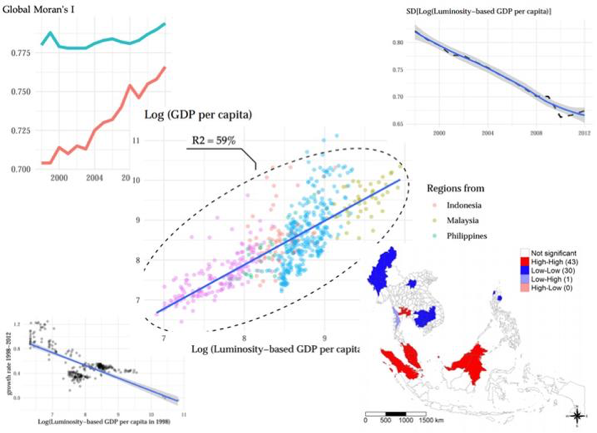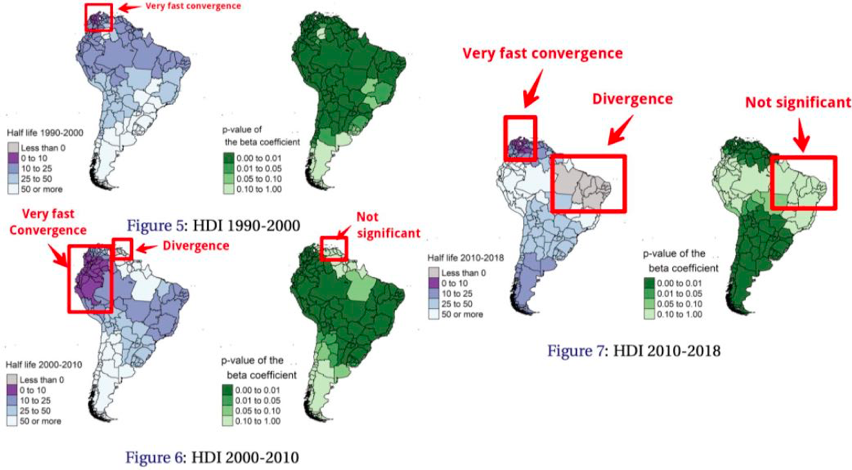Regional growth, inequality, and development: The role of spatial spillovers and spatial heterogeneity
This project exploits recent advances in spatial econometrics to study regional economic growth, inequality, and development across subnational regions of the world. The project is based on new subnational-level databases that cover various aspects of development from Asia, Africa, and Latin America. As such, the project is based on three submodules.
The first and second submodule highlight the fact that satellite nighttime light data are increasingly used for evaluating the performance of economies in which official statics are non-existent, limited, or non-comparable. In the first submodule, we use a novel luminosity-based measure of GDP per capita to study regional convergence and spatial dependence across 274 subnational regions of the Association of South East Asian Nations (ASEAN) over the 1998-2012 period.

In the second submodule, we study the dynamics of national and subnational inequality in Africa. Using a non-linear dynamic factor model, we test the hypothesis that all African nations and subnational regions would eventually converge to a common long-run equilibrium.

The third submodule covers the evolution of economic and social disparities across South America. Specifically, by exploiting a novel multi-country subnational dataset, we evaluate the evolution of the gross national income per-capita (GNI) and the human development index (HDI) across 151 subnational regions over the 1990-2018 period.

- Research category
- Other
- Principal investigator
- Carlos MENDEZ
- Project period (AY)
- 2021-2026
- Reference URL
- https://quarcs.netlify.app/
